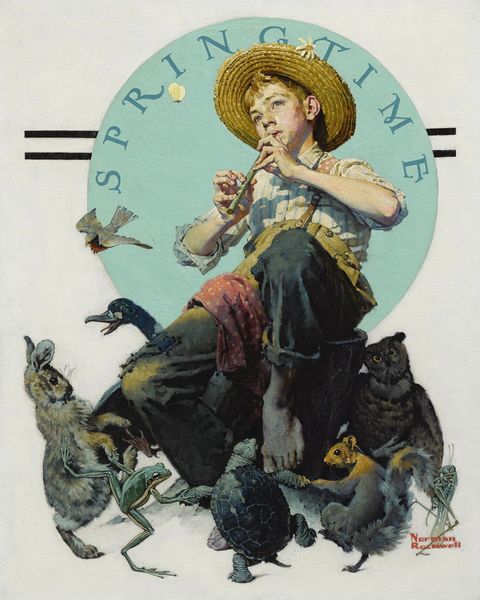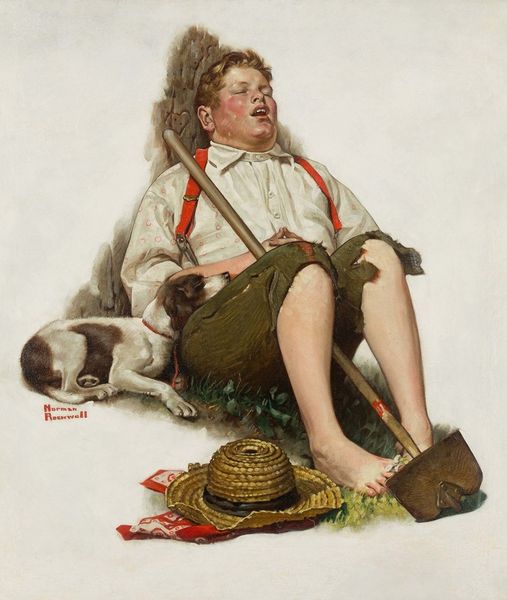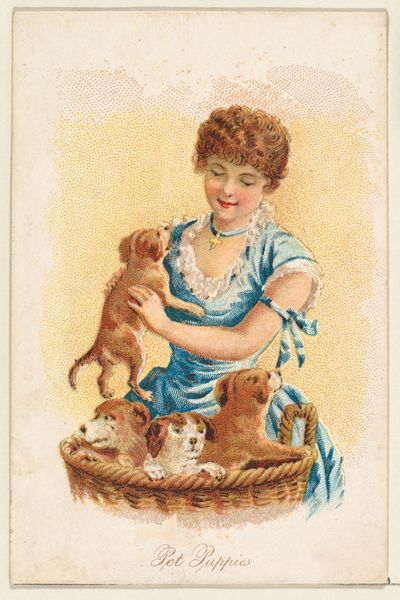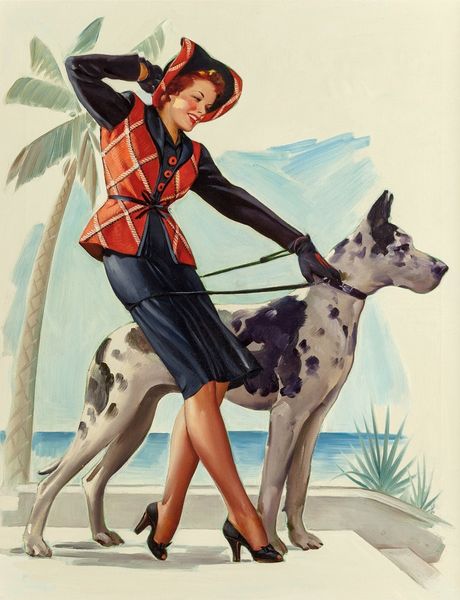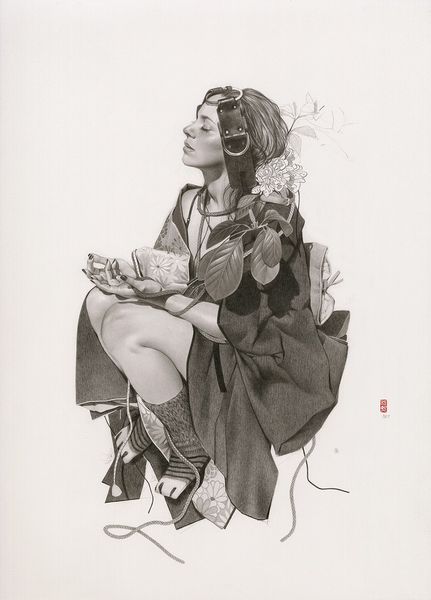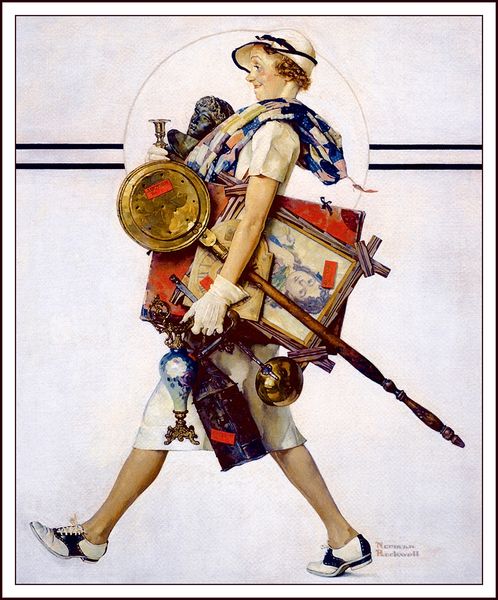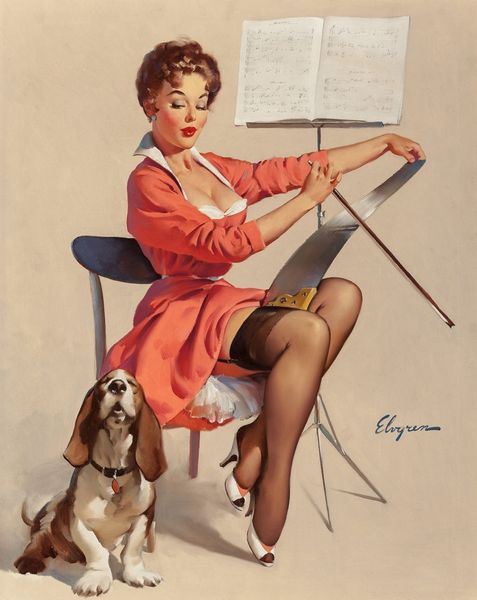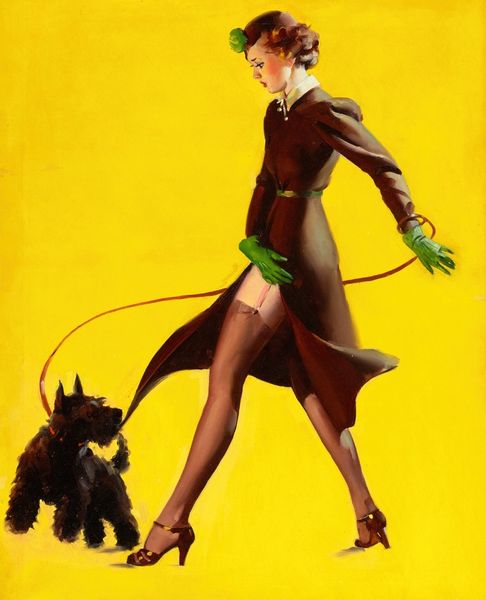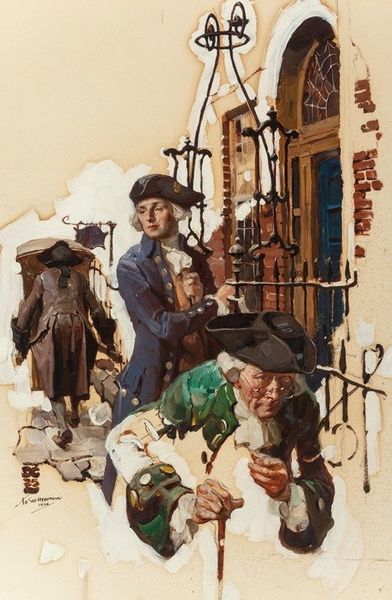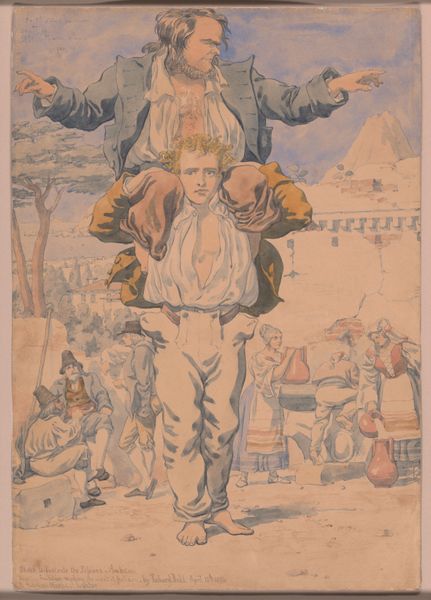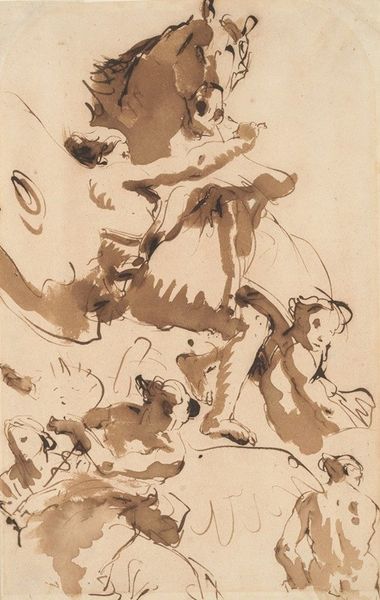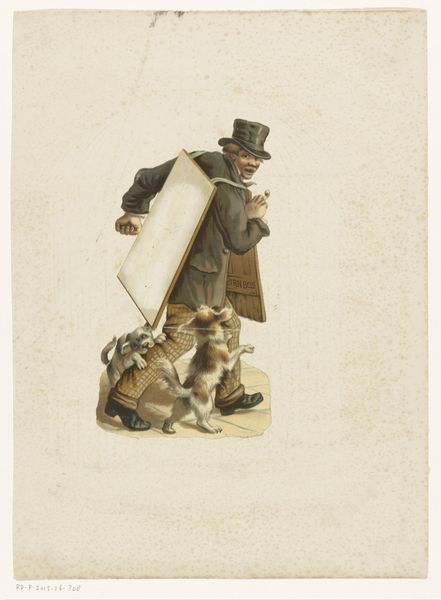
painting, oil-paint
#
portrait
#
painting
#
oil-paint
#
dog
#
figuration
#
oil painting
#
genre-painting
#
portrait art
#
realism
Copyright: Public domain
Editor: J.C. Leyendecker's "The Saturday Evening Post, Barking up the Wrong Turkey," from 1926, is an oil painting with a definite humorous feel. A boy is being ambushed by dogs going for his turkey! What do you make of all this commotion? Curator: The image absolutely brims with symbols related to Thanksgiving rituals and the disruption of expected order. Notice the boy's posture, his wide-eyed terror is visually connected with our own anxieties about things falling apart. The dogs themselves represent instinct versus the social contract, wouldn’t you agree? They are unrestrained desire, and of course, evoke the chaos and messiness we usually hide during celebrations. Editor: That’s a good point, the dogs *are* the opposite of polite! So you're saying it's more than just a funny scene; it's about the tension underlying holidays? Curator: Precisely! It touches upon deeper cultural memories. Turkeys, especially in 1926, would have represented the culmination of an agricultural season. In this sense, it could be argued that they embody hopes, anxieties around sustenance, anxieties that the modern supermarket has allowed us to forget. The entire scene could be a stand-in for the vagaries of fortune itself. Editor: I never considered the turkey's importance beyond just the dinner! I’m starting to see how laden these images are with deeper significance. Curator: The key to understanding such imagery is recognizing that everyday objects can be culturally loaded. An artist such as Leyendecker would consciously select his imagery with that purpose in mind. Editor: This makes me rethink the painting completely. It's a fun surface, but there's this whole other layer to uncover. Curator: Indeed, images are powerful cultural conduits. Always ask: What memories do they stir?
Comments
No comments
Be the first to comment and join the conversation on the ultimate creative platform.
